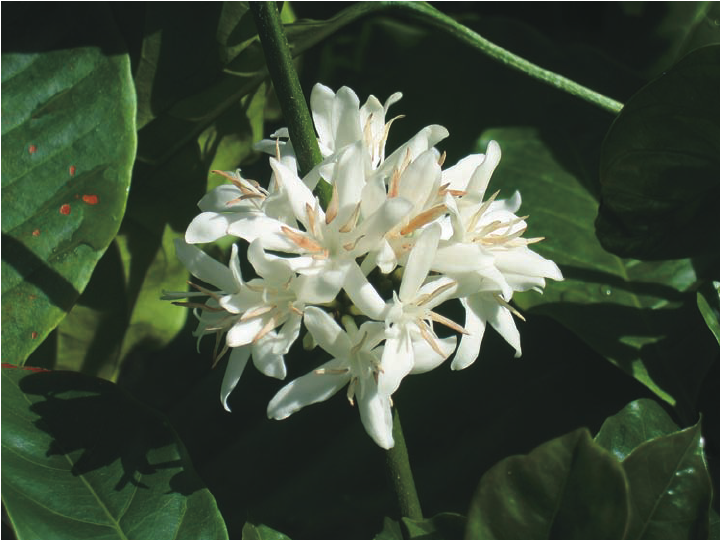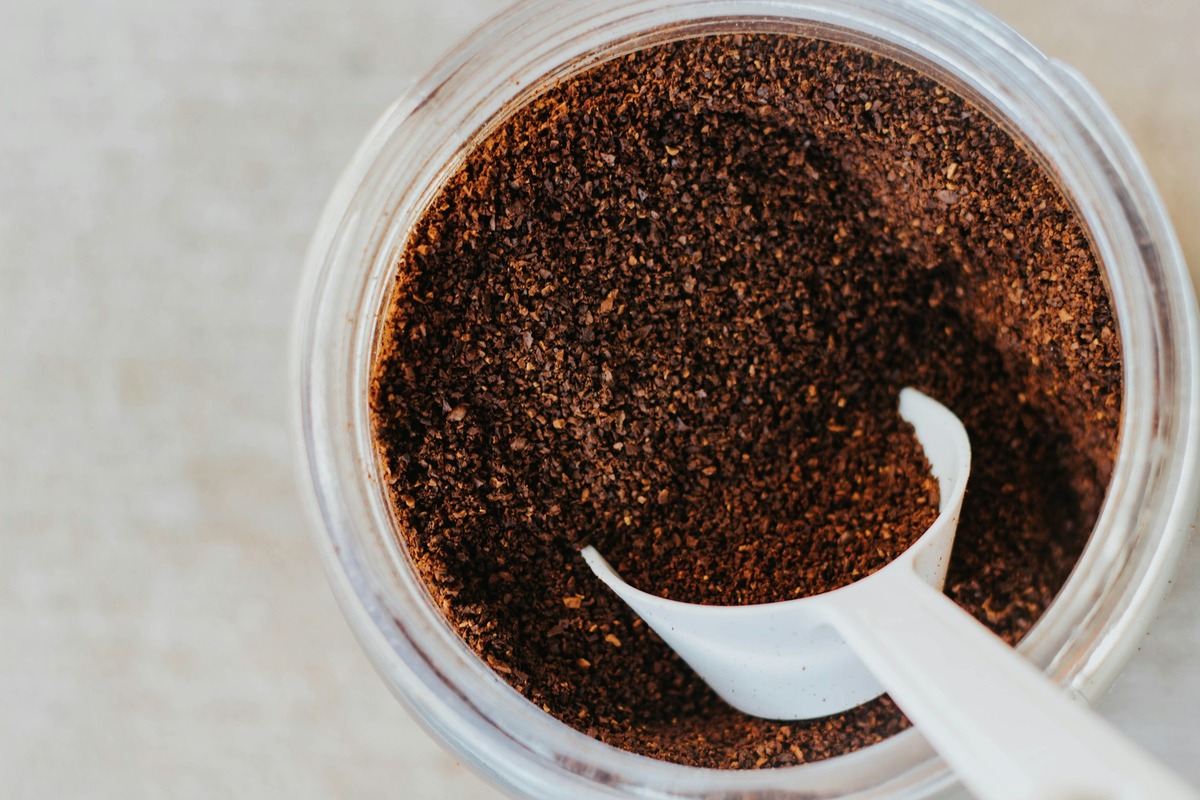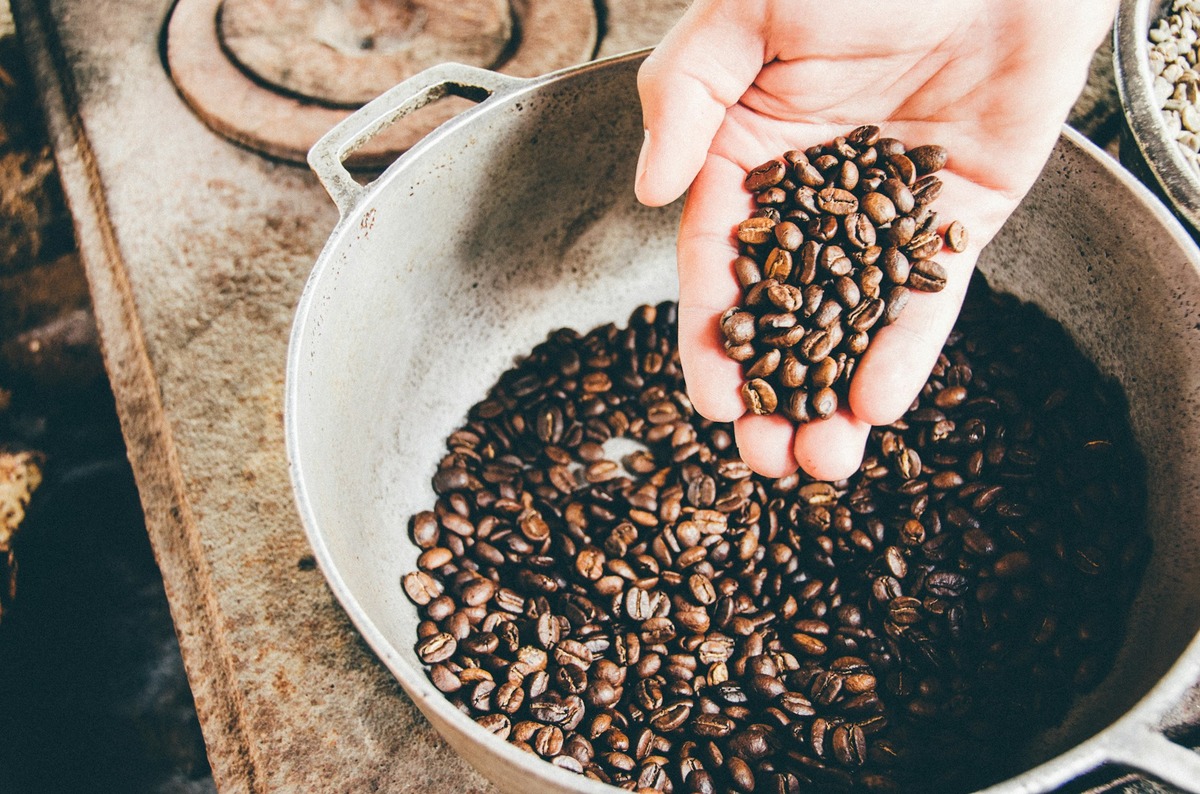Everyone recognizes a roasted coffee bean, but you may not recognize a real coffee plant. Coffee trees are pruned short to conserve their energy and make harvesting easier, but they can grow to over 30 feet tall. Each tree is covered in waxy green leaves that grow in pairs facing each other. Coffee cherries grow along the branches. Because it grows in a continuous cycle, it is not unusual to see flowers, green fruit, and ripe fruit on a single tree at the same time.
After the first bloom, it takes nearly a year for a cherry to ripen, and about five years to reach full fruit production. While coffee plants can live up to 100 years, they are generally most productive between the ages of 7 and 20. With proper care, their production can be maintained and even increased over the years, depending on the variety. The average coffee tree produces 10 pounds of coffee cherries per year, or 2 pounds of green beans.
All commercially grown coffee comes from a region of the world called the “Coffee Belt.” Trees grow best in nutrient-rich soils with mild temperatures, frequent rainfall, and shady sun.
Botanical classification
Coffee originates from a genus of plants called Coffea. Within this genus, there are more than 500 genera and 6,000 species of tropical trees and shrubs. Experts estimate that there are between 25 and 100 species of coffee plants.
The genus was first described in the 18th century by Swedish botanist Carolus Linneaus, who also described Coffea Arabica in his 1753 work Species Plantarum. Since then, botanists have not agreed on the exact classification, as coffee plants can have a wide variety of shapes and sizes. They can be small shrubs or tall trees, with leaves measuring between 2.5 and 40 cm in size and colors ranging from purple or yellow to predominantly dark green.
There are two major species in the commercial coffee industry: Arabica and Robusta.
Coffee Arabica – C. Arabica
- Varieties: Bourbon, Typica, Caturra, Mundo Novo, Tico, San Ramon, Jamaican Blue Mountain
Coffea Arabica is descended from the original coffee trees discovered in Ethiopia. These trees produce fine, smooth and aromatic coffee and account for about 70% of the world’s coffee production. The beans are flatter and more elongated than Robusta and contain less caffeine.
On the world market, Arabica coffees command the highest prices. The best Arabicas are coffees grown at high altitudes, generally between 2,000 and 6,000 feet (610 and 1,830 meters) above sea level, although the optimal altitude varies depending on proximity to the equator.
The most important factor is that temperatures remain mild, ideally between 59 and 75 degrees Fahrenheit, with about 60 inches of rain per year. The trees are hardy, but severe frosts would kill them.
Growing Arabica trees is expensive because the ideal terrain tends to be steep and access is difficult. Additionally, because the trees are more susceptible to disease than Robusta, they require special care and attention.
Coffea canephora – C. canephora var. Robust
- Variety: Robusta
The majority of the world’s Robusta crop is grown in Central and West Africa, parts of Southeast Asia including Indonesia and Vietnam, and Brazil. Robusta production is increasing, although it only accounts for about 30% of the world market.

Robusta is used primarily in blends and for instant coffees. The Robusta bean itself tends to be a little rounder and smaller than an Arabica bean.
The Robusta tree is more resilient and resistant to disease and parasites, making it easier and less expensive to grow. It also has the advantage of being able to withstand warmer climates and prefers consistent temperatures between 25 and 30 degrees Celsius, allowing it to grow at much lower altitudes than Arabica.
It requires about 60 inches of rain annually and cannot withstand frost. Compared to Arabica beans, Robusta beans produce a coffee with a distinctive flavor and about 50–60% more caffeine.
The anatomy of a coffee cherry
The beans being prepared are actually the processed and roasted seeds of a fruit called the coffee cherry.
The outer skin of the coffee cherry is called the exocarp. Beneath this is the mesocarp, a thin layer of pulp followed by a mucilaginous layer called the parenchyma. The grains themselves are covered by a paper-like shell called the endocarp, better known as the parchment.
Inside the parchment are two seeds side by side, each individually covered by another thin membrane. The biological name of this seed coat is spermoderm, but in the coffee trade it is commonly known as the silver shell.
About 5% of the world’s coffee has only one bean inside the cherry. It’s called a snail and is a natural mutation. Some people believe that snails are actually sweeter and tastier than regular kernels, which is why they are sometimes hand-selected for special sale.











